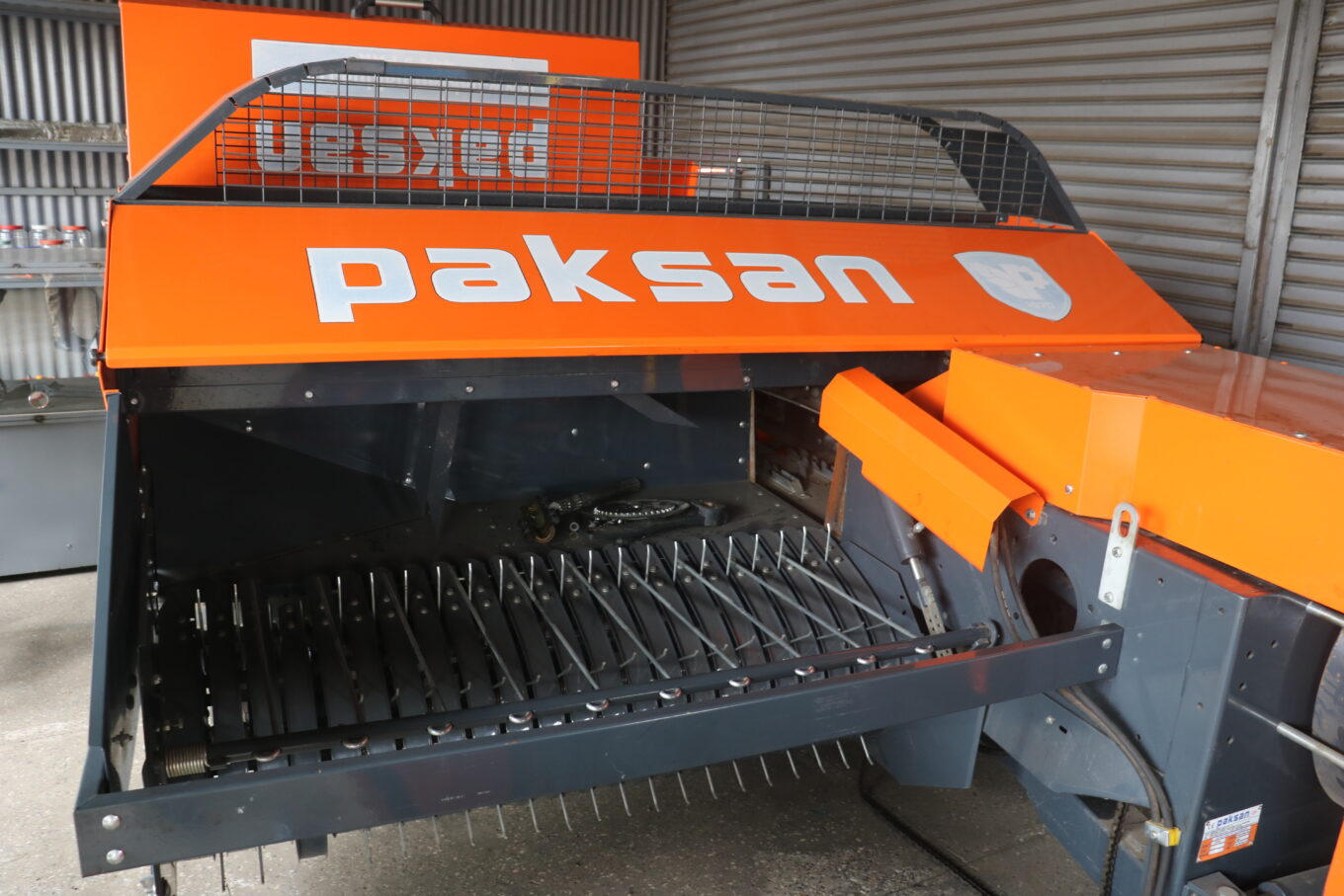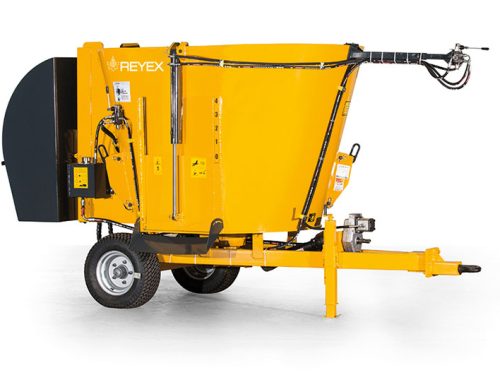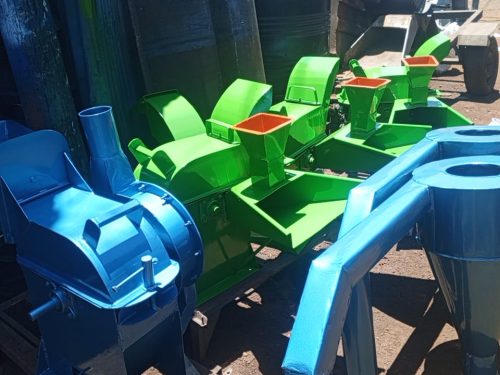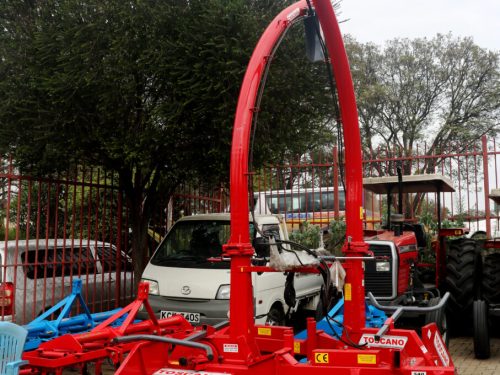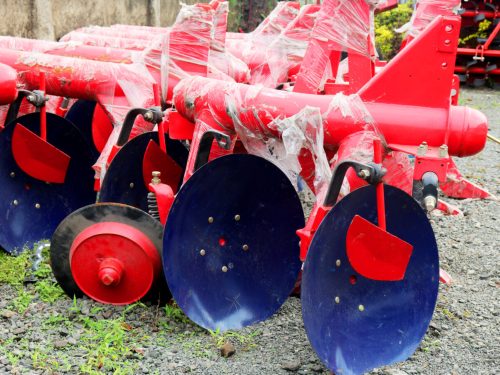Description
HAY BALER MACHINES IN KENYA.
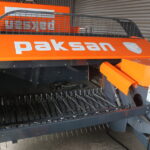
A hay bale is a farm implement used to compress a cut and raked crops such as hay and silage into compact bales that are easy to handle, transport, and store. Many small farmers are finding that these hay baling machines are the best choice for getting their hay in the barn. The baler works on the same principle, of rolling the hay inside a chamber until it reaches a certain size, and then wrapping the bale with either twine or net and ejecting it out the rear of the machine.
Types of hay balers used in Kenya.
Hay balers are of two major types namely cylindrical or round bale type and rectangular type. The two shapes of bale have their own benefits and uses.
-
Round bales
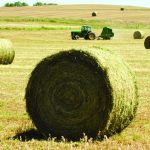
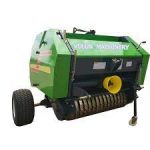
Round bales as the name suggests can be left in the field as they are more weather proof as rain runs off them, and they can also be rolled out in the rainy season if used for bedding. The weight of these bales depends on the size of the bale which is usually 4 to 5 feet, and whether they are packed as hardcore or soft core
Round bales have the ability to shed water much better than square bales, which can allow round bales to be stored more easily in the field and for longer periods of time at a lower cost.
-
Rectangular or square bales
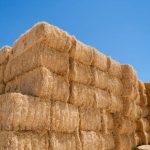

Rectangular bales are easier and safer to stack, either on a trailer for transport or in the barn. They also help to fill all the available space in the barn so you can get more tonnage in the barn. As you would have seen driving through the countryside, round bales seem to be the most popular out of the two types.
Rectangular bales have a greater bulk density and are easier to transport and move than round bales. They also have higher field efficiency because square bales can be ejected from the baler without stopping during operation. Additionally, large square balers have a higher upfront cost than round balers which makes purchasing them more difficult for smaller scale farm operations. Storage of rectangular bales is more difficult than round bales because they must be under a structure or out of the weather to decrease mass loss due to weathering.
The design system components of hay baler machines.
The system design components of hay baler machines consist of the following parts;
-
Auger or feed rake
An auger or feed rake delivers the hay to the edge of the bale chamber. The feed rake then delivers the hay into the baling chamber and the feeding teeth of the feed rake are timed to enter the baling chamber when the plunger is retracted.
-
Pick up lift crank
Lifts the hay from windrow and carries it to the auger or feed rake. The compressors hold the hay down for uniform feeding and prevent strong winds from blowing out of the pickup.
-
Compressor bar
The compressor holds the hay in place so that the auger can feed it into the bale chamber.
-
Feed teeth
The feed teeth gently rake the hay from the ground to prevent losses of leaves and ingestion of rocks or debris into the bale chamber.
-
Bale chamber
The bale chamber contains a plunger that drives in and out each time picking and compressing hay into the desired shapes. The plunger also cuts the ends of hay to make bale uniform size.
-
Tension bars
The tension section has got bars that keep the bale tightly compressed until enough hay has been processed to complete the bale.
-
Wire twister
Has got a mechanism that wraps the bale with two lengths or twine and ties it securely when the correct length of bale is achieved.
Parts of hay baler machines.
- Twine knitter: This is a gear mechanism that ties the knot and cuts the twine free of the supply spool.
- Needles: after the bale has been twined, it is carried on spools and fed through two curved needles that are timed to miss the cycle of the plunger.
- Bale chute: Bale chute hold the bale temporarily before it falls into the ground. Some balers have a mechanism called kickers or bale ejectors which throw the bale onto a hay rack pulled behind the baler.
- PTO shaft drive: PTO shaft drive is used to supply mechanical energy between the tractors and the hay baler machine. The shaft changes the energy of the engine to hydraulic pressure that is used to pull the bale machine. PTO Shaft needs a daily check because they used for pulling heavy loads.
Working principles of the hay baler machines.
The working principle of hay balers depends on the type of baler that is used whether cylindrical or rectangular type.
-
Cylindrical or Round baler.
The cylindrical type of hay balers produce round bales. The round baler picks the hay from the ground and feeds it into the bale chamber.
The hay is then wrapped onto itself by a series of eight long rubber belts which are around seven inches wide. It is picked up and drawn into the baling system where it becomes spherical and fills the bale chamber.
Exerts pressure upon the belts that is in turn monitored by way of the hydraulic system. When the recommended tension is reached, a signal is transmitted to the tractor operator and stops the operation.
The bale is then wrapped with baler twine or protecting sheeting. The pressure on the belts is then released and the whole rear part of the baler is opened via hydraulic cylinders. The bale is then released and rolls out onto the ground. The baler is pulled forward by the tractor, the rear closes and baling resumes.
-
Rectangular hay baler machines.
Rectangular bales can be made to several different lengths but majority are 8” for straw bales, 7” for hay bales, and around 4′ for silage bales which are wrapped in a protective film.
A tractor is required to move and stack these due to their weight and size. The hay enters the baler through the pickup and the teeth gently rake the hay from the floor to prevent rocks or debris entering the baler.
Behind the pickup is the compression bar which holds the hay in location so the auger can move it into the bale chamber. The bale is then compressed and cut to form the correct size and shape.
When the desired length and size of bale is reached, the bale is then wrapped with two lengths of baler twine or wire and is fastened securely.
The fastened bale is then released on the bale chute and falls to the ground or bale ejectors which project the bale onto a hay rack that is towed behind the baler.
Specific sizes of bales produced by hay balers.
Hay bales are produced in different sizes depending on the type and specification of machines being used. The sizes are as follows:
- 35cm by 45cm by 92cm that has total weight of 22kg.
- 401cm by 46cm by 122cm that has total weight of 32kg.
- 41cm by 61cm by 122cm that has total weight of 57kg.
- 2 m by 1.3m by 2.5m that has total weight of 90kg.
Maintenance measures for Hay baler machines.
- The oil and lubrication points should be addressed regularly. The gearbox oil especially is important to change, as deterioration may lead to damage of the seals. The machine operators should check the owner’s manual to identify the specific type of lubricants that should be used for the specific machine. The oil changes are determined by the hours of the operation.
- The balers should be operated within short period of time then temperatures of the bearings should be checked with an infra-red temperature gun. The feeder teeth and needles should be checked for sharpness and quality. Scrappers, cam track bearings, bale chambers, rollers and the teeth should be checked routinely as per the maintenance schedule.
- Baler machines should be kept free from dust and debris at all times as these elements can affect their performance. They should be cleaned and daily and weekly, monthly or annual inspection should be set to detect the possible issues and prevent them as early as possible. The tips on how to clean the machine is as follow:
- Remove the slightest trace of material on drive sprockets or belt rollers.
- Ensure that the baler is perfectly working by assessing the moisture monitoring and preservation applications systems.
- Inspect the bearings, particularly those found on the plunger components, belt rollers, and those found on drives.
- Clean the net wrap and twine wrap components to get rid of rust that can lead to the net or twine to get stuck.
- Clean, prepare the twine then wrap it.
Maintenance measures for Hay baler machines continuation
- Chains and belts should be inspected regularly including drive chains. They should be checked for wear and tear and they should be replaced together with the sprockets. Additionally, the drive belts should be free from cracks and the idlers turned smoothly.
- The hydraulic system filters should be replaced with new ones. The machines should be switched on to eliminate air from the system.
- The auto-lube system should be in proper working condition. When filling the reservoir with the right type of oil, it is advisable to refer to the operator’s manual. The hoses and tubes should also be examined to make sure they have not been damaged.
- Hydraulic hoses and electric cables should be maintained to ensure they are always in a good working condition.
- For the exterior inspection, dust, dirt and debris should be removed by air pressure. The machine should be washed with great care. The high pressure should be kept off from the seals and bearings to avoid damage.
- After cleaning and lubrication, the machine should be run for few minutes, thereafter the chains and moving parts are oiled. Tires should be checked for damage or excessive wear. The lug bolts are tightened according to the specifications indicated in the manual.
- The feeder guards should be checked to ensure they are intact. The damaged tines should be replaced in the pickup. The stripper plates must not bent or damaged and the pick-up track bearings and cam tracks should be examined for wear and tear.
The parts of baler machine that need daily and weekly maintenance.
Hydraulic hoses, hydraulic fluids levels, hydraulic oil temperatures, cylinders, filters, pumps, valves, piles, motors conduits, twister pistons, proximity switches, safety guarding, bale chamber for debris, cylinder housing areas, oil tanks magnets, motor couplings, hydraulic oil temperatures, bearing in drive shafts, bottom track cover, track springs for proper inspection and shear knife clearance.
Hay baler machines dealers in Kenya.
Looking for the best suppliers and seller of hay baler machines in Kenya, the best solution for you. Eunidrip Irrigation and Agricultural Machinery.
We are best in offering various ranges agricultural solutions. Eunidrip irrigation and agricultural machinery deals with design and installation of irrigation projects, greenhouses, bio-gas production, poultry production equipment and structures. We also offers various types of agricultural machinery and implements such as chaff cutters, hay balers, ploughs, planters, boom sprayers, rakes etc.
We offer our products at a relatively cheap price that can meet the targets our small to medium scale farmers. Additionally our prices are negotiable. Eunidrip Irrigation and Agricultural Machinery are located in Nakuru Town Center, just directly opposite to Nakuru County Assembly and next to Medicross Hospital along George Morara road.
Advantages of hay baler machine.
- Balers have a high baling capacity. They will never have to stop to wrap or tie a bale, so are able to bale a maximum tonnage in a given period of time.
- The bales are easy to handle. The square bales are the easiest shape to stack, and with an average small weight. They are also easy to lift and move around.
- The hay baler machines has very low horsepower requirement. Round baler needs only around 10 – 15 horsepower to operate.
- The machines are lighter weight. Round balers weigh much less than square balers. Therefore they are safer to operate on hills, and tractors of any size can easily pull them.
- They have simpler design. Round balers are simpler machines than square balers, with fewer adjustments required and fewer parts to break.
- Hay balers have smooth operation modes unlike other machines whereby jerking motion can be somewhat fatiguing.
- They produce small size bales which can actually fit in the back of a pickup truck. In storage it will take up about a quarter as much space as a square baler.
- Bales are weather resistance. They bales may stay in the field for any extended period of time without being damaged by weather conditions. Round bales will hold up much better to rain and dew. Net wrap provides an even higher level of protection.
Disadvantages of hay baler machines.
- They have lower output capacity, because of the smaller pickup of a round baler and the need to stop when tying a bale, production rate with a mini round baler will only be about half what is possible with a square baler.
- There is hard time during stacking. The round bales stack well than rectangular bales. But now the issue is that they will never stack as tight as a stack of square bales.
- The square balers are quite heavy compared to a round baler, in that when you are baling steep slopes or have a very small tractor, a square baler’s weight can become hazardous.
